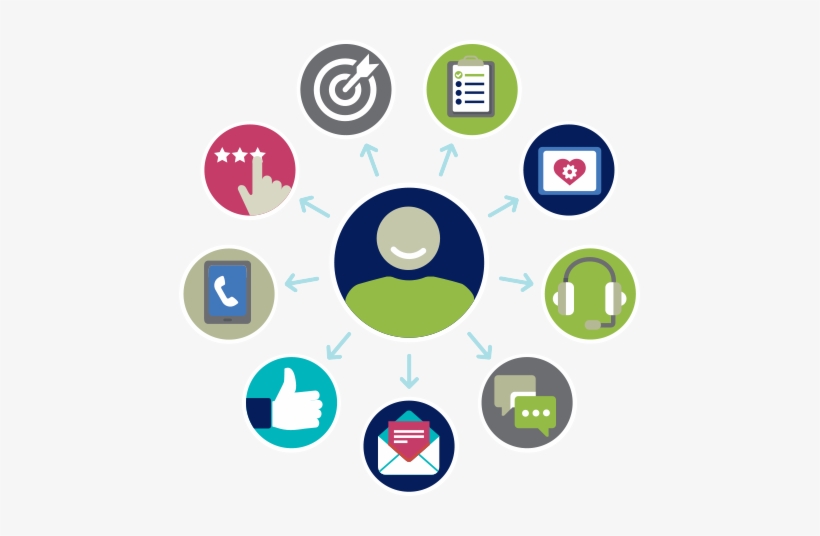Firms rated in the top 25% in terms of employee experience have the best business value, according to researchers from the MIT Center for Information Systems Research, who found that those companies also have higher customer satisfaction rates, are faster and more agile, and are more profitable !
Companies that build positive employee experience enable workers through an adaptive work environment and collective work habits to do the work of today and to re-imagine the work of tomorrow, where the relationship between technology and how people work and feel is of paramount importance.
The recent transition of employees scattered in thousands of different “workplaces”
– their own homes! – has been a watershed moment in the history of employment.
It has forced even reluctant companies and employees to quickly embrace communication platforms and other technologies. At the same time, new challenges emerged as companies attempted to recreate new systems, working methods, and habits that had evolved through the years in old traditional office work environments.
These are four critical phases that all small and large companies have to undergo and to be keenly aware of, if they want to evolve toward a new positive and successful Employees Work Experience:
FIRST PHASE: SHIFTING FROM BASIC SURVIVAL TO PLANNED REDESIGN
During any initial transitional phase from traditional to remote work, it is natural that all companies experience a survival phase, focused on ensuring basic continuity of operations by installing basic hardware, software, and organizational capabilities.
Communication flows one way from the company to employees during this phase. Things typically continue to become more chaotic with multiple demands emerging, pre-disruption difficulties becoming more evident, and problems surfacing as new tools and technologies are being deployed.
At this point, it becomes necessary for the company to re-create and re-imagine the employee experience in their new environments, in order to find out what the employees need to thrive again. The key during this phase is to listen and to look for insights, stories, and data to learn what is relevant and critical for your employees.
With this new information, the company can begin to move toward a redesigning phase as it starts to implement ways for the employees to succeed in their new environments and beyond.
SECOND PHASE: MOVE FROM EXPECTING EMPLOYEES TO BE “HEROES”, TO ESTABLISHING SYSTEMS AND PROCESSES TO HELP THEM SUCCEED.
Companies that deliver strong employee experiences deliberately move away from a culture of heroics where employees are expected to become heroes in the organization by going above and beyond to deliver for customers. Instead, these companies have learned to focus on processes and systems that can deliver for customers consistently and solve complex problems as required. The key to accomplish this new milestone lies in the systemic connection between technology, employee supports and behaviors, and new metrics. Among some of the most important systems and processes requiring design focus and implementation are:
- Integrating operations across silos to facilitate employees innovation and delivery to customer experience.
- Providing seamless access to data and information about customers, placing power in the hands of employees to do what technology can not do.
- Digitizing work, in order to facilitate employee mobility and self-help.
- Using employee platforms, which allows employees to search for information and ideas, easily share knowledge, and reduce duplication.
Companies that have invested in a dedicated customer experience team have been able to move through this phase in a much more effective and systemic way, by looking across the entire organization, creating systemic accountability measures, getting technology into the hands of the employees faster, and anticipating speed bumps ahead of time, instead of reacting to them.
THIRD PHASE: DRAW ON EMPATHETIC LEADERSHIP TO MAKE CONNECTIONS
Empathetic Leadership is always a driver for success. When reaching out to employees in this critical phase, this doesn’t just mean soft caring skills, which are also as important as ever right now.
Companies that have succeeded in this phase, after they first made sure that employees had what they needed to work at home, initiated conversations and check-ins with their leadership. They conducted employee surveys first every two weeks, then every four weeks, about leadership, well being, remote technology, and whether employees were able to deliver what was needed to clients.
Teams were eager to recreate line-of-sight management despite being disconnected, often using tools such as digital Kanban boards to allow teams to visualize workflows, and feeling more in control of work produced as well as what is coming.
One remaining common challenge is how to help employees disconnect at the end of the day, as people truly struggle with how to turn off the “work mode”.
FOURTH PHASE: ENABLE EMPOWERED TEAMS
Finally, successful companies such as CarMax have demonstrated the benefit of empowering cross-functional teams to have the latitude to explore new options and outcome goals, with the appreciation that creativity really comes from the teams on the ground, especially when they are all over the place, and not from the leaders.
Groups of seven to nine people are given specific outcome goals to accomplish through experimenting, testing, and learning along the way. Every two weeks the teams present what they have accomplished to other similar teams and to members of the C-suite. Management has visibility and transparency into the work being done, while teams know their leaders have a vested interest in what they are doing.
While helping employees thrive in the Covid-19 era is harder than ever before, adopting and applying these critical considerations through these four phases will provide tremendous opportunities to support your employees’ positive experience, and ensure that they will continue to thrive.
